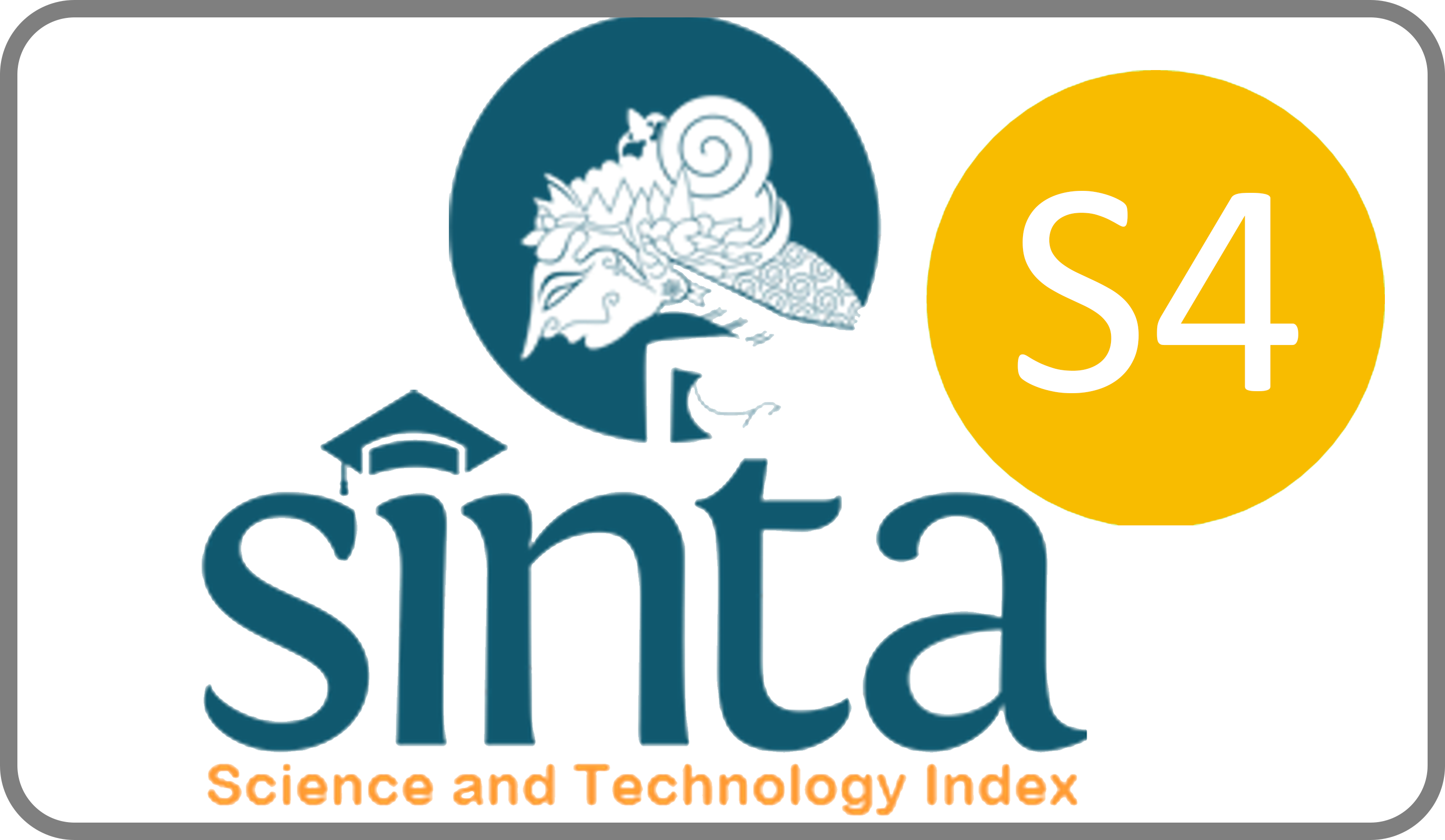PKM IMPLEMENTAION OF CATFISH CULTIVATION (BUDIKDAMBER) WITH PASSIVE CIRCULATION TECHNOLOGY AS AN EFFORT TO IMPROVE FOOD SECURITY IN ORPHANAGES, WARU, SIDOARJO
Downloads
Catfish (Clarias sp.) is a leading fishery commodity in Indonesia, prized for its taste and disease resistance, making it an ideal choice for farming even in areas with limited water and land. The Insanul Kamil Al-Khaer Orphanage in Sidoarjo, as a social foundation, faces challenges in providing productive and educational activities for its residents. Currently, the orphanage offers only worship and basic school activities for the children. To address this, the Community Service Program implemented a solution based on science and technology that would provide additional income, improve nutrition, and offer valuable learning experiences. The Community Service Program introduced the Budikdamber (fish farming in buckets) system, which is simple to set up and does not require extensive land or water. The program was implemented in three stages: preparing the materials, conducting socialization and training, and providing ongoing assistance in managing the catfish cultivation system using Budikdamber with passive circulation technology. After completing one full cycle of cultivation, the Community Service Program showed that the Budikdamber system improved food security, provided a steady income from surplus fish and vegetables, and reduced reliance on external donations. The program also highlighted the educational benefits for the children involved in managing the system. These results confirm the potential of the Budikdamber system to enhance community empowerment and sustainability. The Community Service Program provides a model for replication in other orphanages and community-based institutions. Further Community Service Programs are needed to evaluate the long-term impact and scalability of this innovative approach.
Alam, A., Khan, N., & Ahmad, I. 2022. "Exploring the food security and growth status of the orphaned children in the four selected orphanages of Khyber Pakhtunkhwa, Pakistan." Journal of Social Sciences Review, 2(3), 278-286. https://doi.org/10.54183/jssr.v2i3.130
Asamoah, M., & Tandoh, M. 2022. "The magnitude of hidden hunger and cognitive deficits of children living in some selected orphanages in Kumasi, Ghana during the COVID pandemic." The FASEB Journal, 36(S1). https://doi.org/10.1096/fasebj.2022.36.s1.0r766
Bennett, A., Basurto, X., Virdin, J., Lin, X., Betances, S., Smith, M., … & Zoubek, S. 2021. "Recognize fish as food in policy discourse and development funding." Ambio, 50(5), 981-989. https://doi.org/10.1007/s13280-020-01451-4
Cai, J., & Leung, P. 2023. "Popularity and parity: towards more inclusive and balanced aquaculture." Aquaculture Reports, 22, 100698. https://doi.org/10.1016/j.aqrep.2023.100698
DeLacey, E., Tann, C., Groce, N., Kett, M., Quiring, M., Bergman, E., … & Kerac, M. 2020. "The nutritional status of children living within institutionalized care: a systematic review." PeerJ, 8, e8484. https://doi.org/10.7717/peerj.8484
Episar, E., Susilawati, W., & Afrianto, E. 2018. "Analisis Usaha dan Profitabilitas Pada Usaha Budidaya Ikan Lele Studi Kasus Kelompok Pembudidaya Ikan (Pokdakan) Ngaol Jaya Desa Sungai Ulak Kecamatan Nalo Tantan Kabupaten Merangin". Jurnal Agri Sains, 2(2), 1-9.
Farmery, A., White, A., & Allison, E. 2021. "Identifying policy best-practices to support the contribution of aquatic foods to food and nutrition security." Foods, 10(7), 1589. https://doi.org/10.3390/foods10071589
Girard, A., Self, J., McAuliffe, C., & Olude, O. 2012. "The effects of household food production strategies on the health and nutrition outcomes of women and young children: a systematic review." Paediatric and Perinatal Epidemiology, 26(s1), 205-222. https://doi.org/10.1111/j.1365-3016.2012.01282.x
Hastuti, Y. P. 2011. "Nitrifikasi dan Denitrifikasi di Tambak". Jurnal Akuakultur Indonesia, 10(1), 89–98.
Kawarazuka, N., & Béné, C. 2010. "Linking small-scale fisheries and aquaculture to household nutritional security: an overview." Food Security, 2(4), 343-357. https://doi.org/10.1007/s12571-010-0079-y
Kuswanto, C., Rohman, B., & Denata, G. 2022. "Budikdamber training: efforts to optimize the utilization of home yard." Smart Society Community Service and Empowerment Journal, 2(1), 9-17. https://doi.org/10.58524/smartsociety.v2i1.82
Purnamaningrum, A. 2023. "Pelatihan budikdamber sebagai upaya penguatan ketahanan pangan di panti asuhan Baiti Jannati Kota Semarang." Jurnal Pengabdian Pada Masyarakat, 9(1), 208-222. https://doi.org/10.30653/jppm.v9i1.687
Shava, E., & Gunhidzirai, C. 2017. "Fish farming as an innovative strategy for promoting food security in drought risk regions of Zimbabwe." Jàmbá: Journal of Disaster Risk Studies, 9(1), 491. https://doi.org/10.4102/jamba.v9i1.491
Sidik, A.S., Sarwono, & Agustina. 2002. "Pengaruh Padat Penebaran Terhadap Laju Nitrifikasi Dalam Budidaya Ikan Sistem Resirkulasi Tertutup". Jurnal Akuakultur Indonesia, 2(2), 47-51.
Singwa, A., Tanya, A., Ngangmou, T., Navti, L., Tamfuh, P., & Ejoh, R. 2022. "Nutritional status and eating habits of children in orphanages in Bamenda (North West Cameroon)." International Journal of Nutrition and Food Sciences, 11(2), 30. https://doi.org/10.11648/j.ijnfs.20221102.13
Singwa, A., Tanya, A., Ngangmou, T., Navti, L., Tamfuh, P., & Ejoh, R. 2022. "Nutritional status and eating habits of children in orphanages in Bamenda (North West Cameroon)". International Journal of Nutrition and Food Sciences, 11(2), 30. https://doi.org/10.11648/j.ijnfs.20221102.13
Yudawisastra, H., Hanim, W., Mardiana, S., Sudarto, T., Sudarisman, E., & Noor, H. 2023. "Budikdamber akuaponik sebagai strategi ketahanan pangan dan stimulus kewirausahaan saat pandemi COVID-19." Bemas Jurnal Bermasyarakat, 3(2), 162-170. https://doi.org/10.37373/bemas.v3i2.258.
Copyright (c) 2025 Rozi Rozi, Luthfiana Aprilianita Sari, Kismiyati Kismiyati, Cornelia Sekarjati, Raden Roro Salma, Daud Dharmansyah, Nanda Mutyara, Dinda Yusufina, Reksa Galang, Addul Manan

This work is licensed under a Creative Commons Attribution-ShareAlike 4.0 International License.
JLM by Unair is licensed under a Creative Commons Attribution-ShareAlike 4.0 International License.
1. The journal allows the author to hold the copyright of the article without restrictions.
2. The journal allows the author(s) to retain publishing rights without restrictions
3. The legal formal aspect of journal publication accessibility refers to Creative Commons Attribution Share-Alike (CC BY-SA).
4. The Creative Commons Attribution Share-Alike (CC BY-SA) license allows re-distribution and re-use of a licensed work on the conditions that the creator is appropriately credited and that any derivative work is made available under "the same, similar or a compatible license”. Other than the conditions mentioned above, the editorial board is not responsible for copyright violation.


















